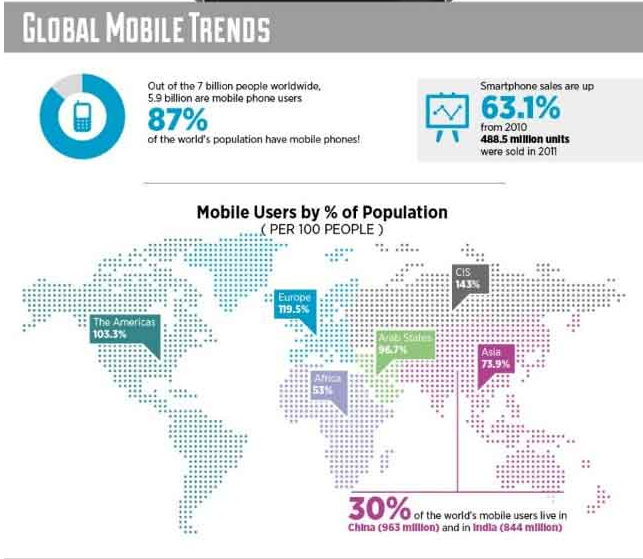There are many issues that may need to be addressed prior to fully integrating mobile devices into the classroom. For example, teachers would all need to agree on a set policy regarding mobile devices and we would all have to be consistent. The consequences of inappropriate use would also have to be clearly set and agreed upon by all teachers and administrators. Schools would also have to make sure they had devices available for use for students who do not have access to mobile devices. Cultural considerations would also have to be made for students who aren't allowed to access technology of this kind (e.g., some Mennonite families in Southern Alberta).
Here is an example of a classroom cellphone policy that includes many important aspects to consider.
Things to be considered in the acceptable use policy include:
- Where cellphone is to be kept when not in use (e.g., facedown on desk)
- When it is appropriate to use
- How it is appropriate to use
- Why they are important tools in the classroom
- What they are expected to be used for
As mentioned above, mobile devices are so popular that educators should begin to make use of them in the classroom; however, it is not only because of their popularity in our student's lives, but they also strengthen learning. They provide students with the ability to conduct research, access academic apps, and collaborate with one another all at their fingertips. They also allow students to learn at any time, and at any place they wish. This opens up amazing opportunity because students can be learning while they wait for the bus in the morning, etc.
When teachers begin to bring in mobile devices they must do so slowly and only once they have gotten to know their class. We must set up very clear expectations around appropriate use. We must also set up consequences for students who fail to follow the rules (and this will happen). In my classroom I would probably start out slow, using mobile devices every so often for small things such as polleverywhere. Slowly as my students show me they can handle the use of cell phones in the class I would begin to use them more.
In my further research I found the following apps I plan to use in my classroom:
Team Shake - this app makes groups at random for class projects, etc.
Too Noisy - manages the level of classroom noise.
History: Maps of the world - Allows students to explore the world through the use of interactive maps.
How Rocket learned to read - An interactive book students can read or can have read to them.
Significant Comments
http://kmarraportfolio.weebly.com/2/post/2013/07/topic-10-convergence-and-mobility.html#comments
http://missraychert.weebly.com/1/post/2013/07/topic-10-convergence-and-mobility.html#comments
References
Bustos, L. (2012). Global mobile trends (infographic). Retrieved from
http://www.getelastic.com/global-mobile-trends-infographic/
Ewart, T. (n.d.). Cell phones in class acceptable policy use. Retrieved from, http://cellphonesinlanguageclass.wikispaces.com/file/view/Acceptable+cell+phone+use+info.pdf

 RSS Feed
RSS Feed